Words Ken BaronImages Pion Studio
Since founding the ioo Architecture firm at the tender age of 25, Elwardt has been transforming existing structures into fresh-faced wonders or seeing her new builds move from inspired concepts to towering creations. Under her expert guidance, these projects are then brought beautifully to life by designers like Wisniewski, founder of weStudio, who introduce story, beauty, and wonderment to her pristine stages.
The cōmodo is a perfect example of the architect creating a new stage—this one from an existing 1960s structure—and the designer crafting the drama, in this case with native-wood paneling, inspiring artwork, and custom-designed furniture, wallpaper, and rugs that capture the essence of the Austrian Alps. But the cōmodo also represents something new for the duo: For Elwardt, the Bad Gastein property is her first foray into hospitality as a hotelier. And for Wisniewski, who studied architecture in his home country of Poland before receiving a master’s degree in that discipline in Berlin, it is the chance to serve as both a hotelier and a partner to the woman who employed him at her firm for years.

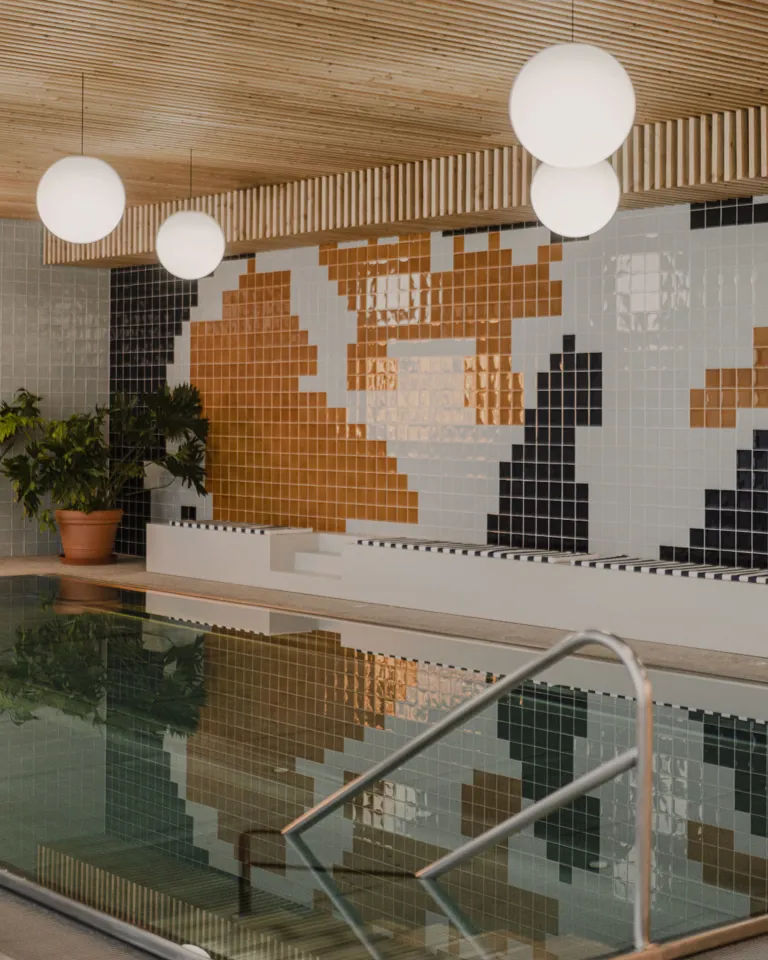
The color palette and playful design of the pool's tiles speak to the building's 1960s heritage
Barbara Elwardt: I wanted a “forever” place. I own some holiday apartments, but this is my first hotel. And I didn’t want to do it as an investor. I wanted to do it for myself. After decades of working, I had the money. It was just time. And then I found this spot in Bad Gastein. It had always been my wish to create a place for my large family where we could enjoy being together, besides our beloved home in Berlin. Bad Gastein is that place. You can hike, ski, cook, go biking, paragliding, golfing, for walks, everything!
BE: [laughs] I think it takes an architect to separate what is from what is possible. When I first saw the building, it was quite ugly. Still, you have to work with the construction that is there. Ugliness aside, I got that the width of the rooms was just perfect, as was the view to the valley. Plus, it had enough staircases and the right location at the end of the little town; it is close to the forest and a waterfall. Also, in the mountains, structures are normally vertical; however, this one has a huge horizontal level, which meant that everything could flow together: the entrance, the lobby, the bar. The building just really fit my eye, and I knew it would be quite easy to work with. [She laughs again] Piotr, when you first saw it, did you think I was crazy?
Piotr Wisniewski: No, I was completely open. In the end, it was your money. So I had nothing to lose! And I completely agree—the bones of the building were perfect, as is its location. Structure-wise, Barbara added a corridor and rooms facing the forest and the mountain that were not there. That was new for us, but very natural to Austria and eco-friendly.
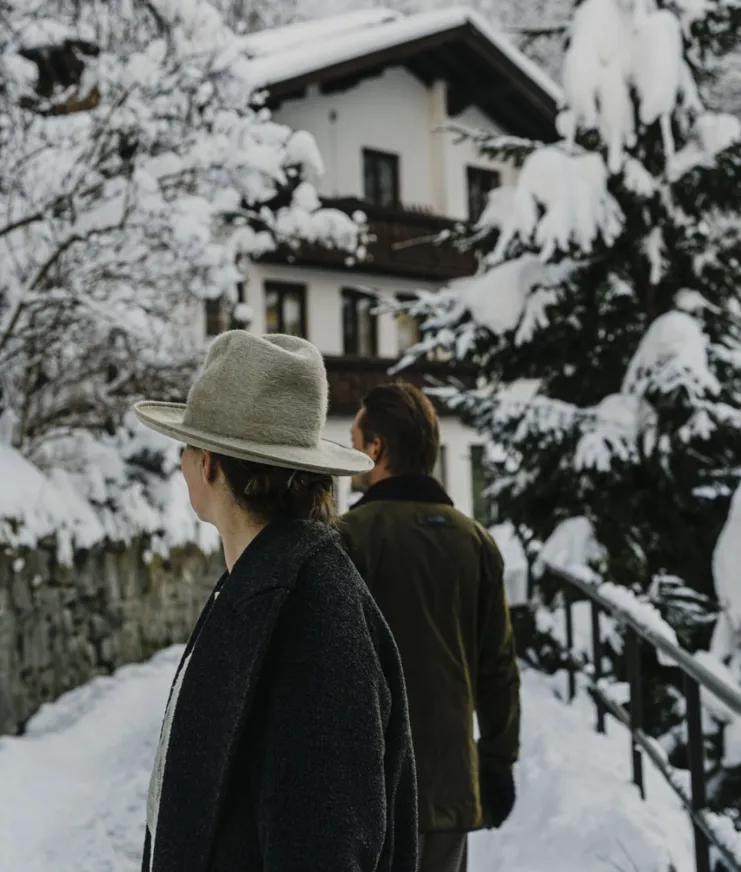
The hotel's snow-globe setting, its valley views, and its proximity to town, the forest, and a waterfall immediately got Elwardt's attention
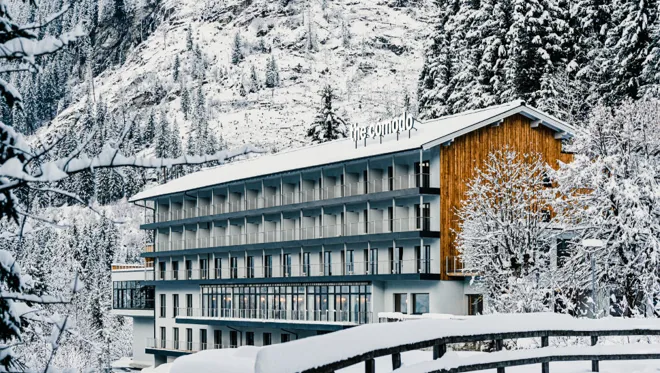

PW: Well, with each you take a different approach, but I love to work with existing structures as they give you limitations. Working without limitations is like being given a tabula rasa—you can do everything; but in the end, you do nothing. With the structure that became the cōmodo, you have history, the Alps, the landscape...I took a contextual approach to the design, one that continues the story of the place and the totality of the setting.
PW: Yes and no. It’s not just Berlin. It’s living in a big city. Berlin, London, New York...it doesn’t matter, actually. I would not identify myself with a Berlin style. In a city, you live with so many nationalities, and meeting new people is very inspiring.
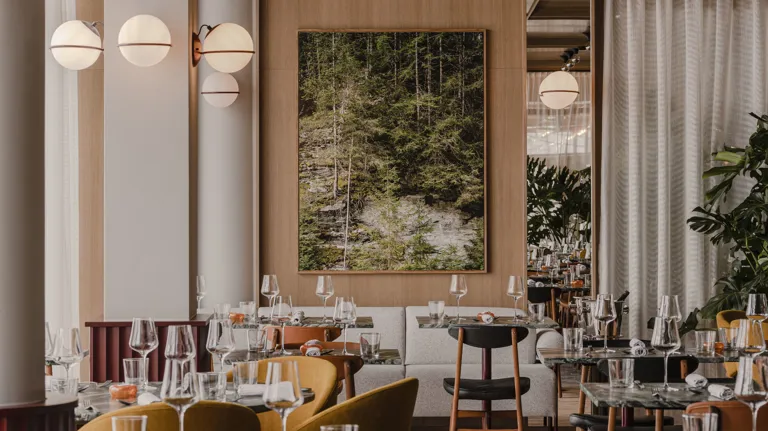
Winners of 196+ forum Milan's "Hotel Design Award 2023,” the hotel's interiors were conceived with history and the Alpine landscape in mind

A collector's collection: Piotr Wisniewski fills the hotel's bookshelves with personal treasures
BE: True, but ultimately, a hotel is not a building or the material that we use to shape it; it’s a relaxed place that affords people the opportunity to exchange ideas, to connect. It’s the music you hear, how you walk through a space, how you interact, what you smell, what you read. Creating a hotel is like creating a screenplay. What do you see when you drink your coffee? Do you have a nice feeling when you open a door? It’s much more than a structure—and it is always connected to people.
Barbara Elwardt
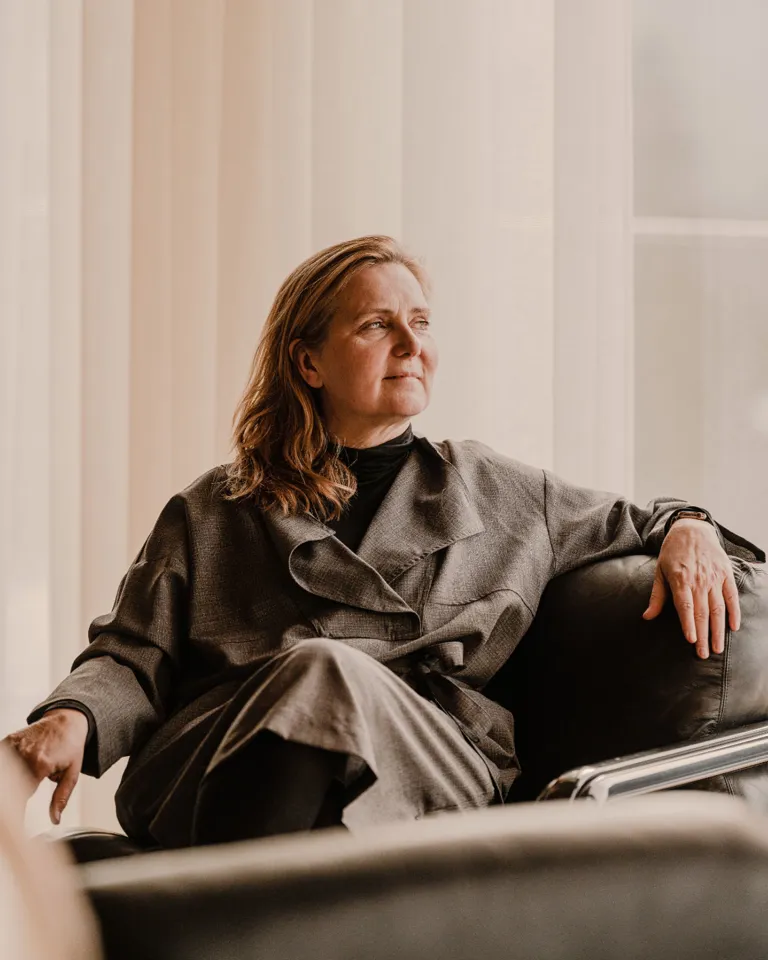
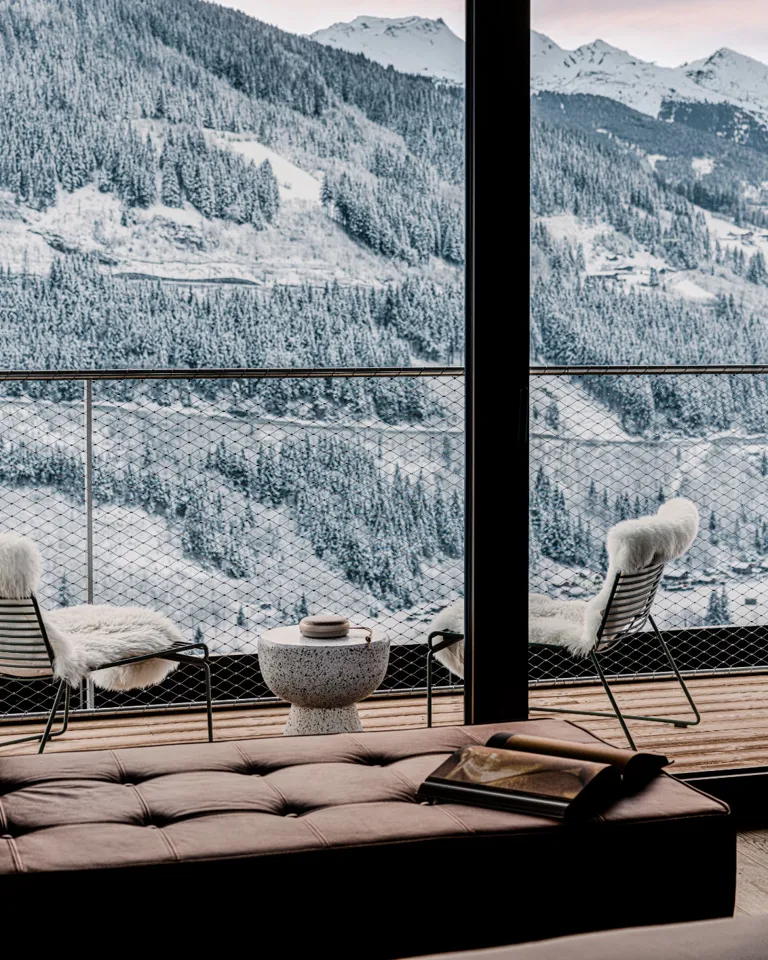
Piotr Wisniewski
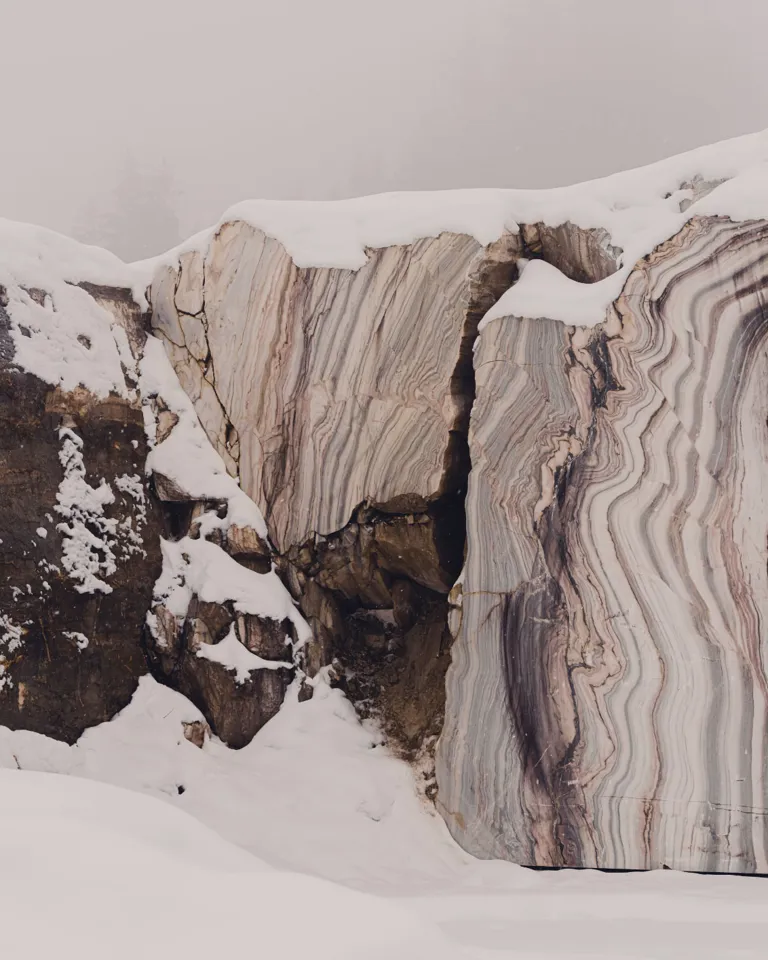
Stone love: It was a short trip from the quarry to the hotel's suites
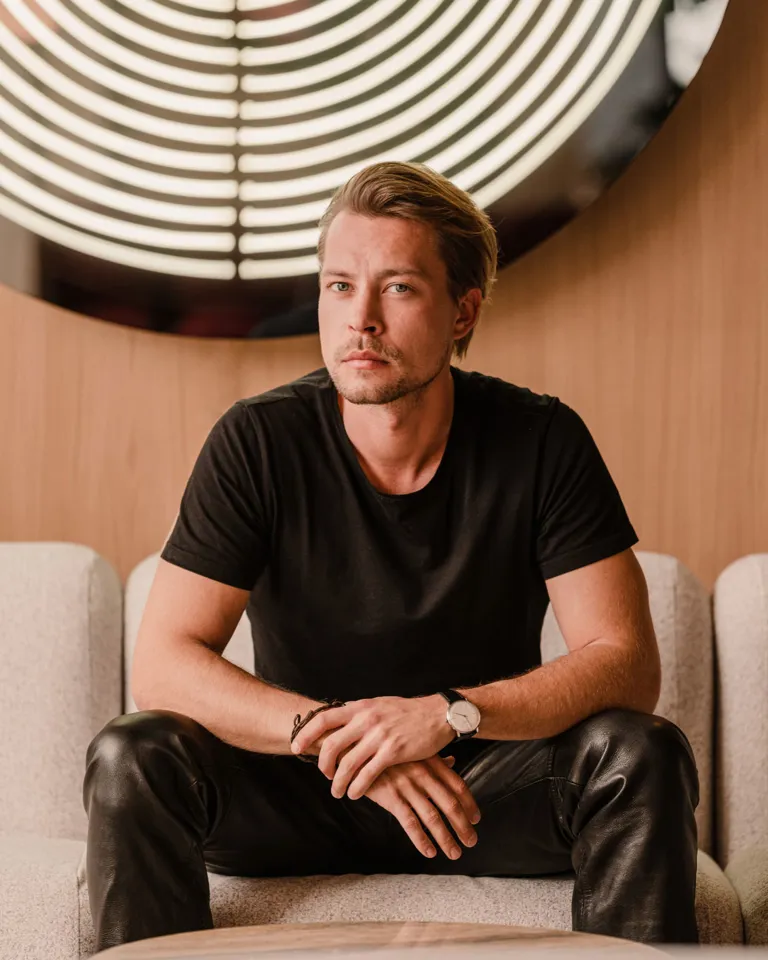
PW: We like to use local materials. I strongly believe in forming a connection with these elements. Importing something from a different country? Anyone can do that. The marble came from a quarry that’s relatively close to Bad Gastein. We also used local granite.
PW: Yes, definitely! But it’s a long step from Pokémon to midcentury furniture. I have always collected things, and I read intensely and research whatever it is that I am passionate about at the time, which of course includes different design periods. And if you are informed as a collector, you can buy low and sell high. Which I always did!
PW: That was when I was a kid. My parents and grandparents grew up in communist Poland, and everything was gray. Tropical plants were colorful, but very rare. So I started buying them and taking care of them. They were like small pets to me. People have dogs or hamsters. I had cacti.
BE: Travel. Ever since I was a little girl, I wanted to travel. And I did! At the age of 12, I flew alone to Ireland. I remember landing in Dublin and someone there said that my flight to Cork was canceled, so they flew me to Shannon Airport, instead. When we landed, I was sitting by myself, scared, because I thought they had sent me back to England! But beyond travel, my lifelong passion is hotels—even as a young girl. I don’t know why. But today, if I don’t like a room, I can feel it physically.
BE: In school, we had a newspaper that asked everyone what they would be when they were grown up. I said architect. I was 17 years old. I knew that I always wanted to have a creative job. At first, I thought about being a designer. But I didn’t want to design a cup or a plate or little things. I’m very into the big picture.
BE: Yes, but it’s funny that she is. When she was younger, we always had these big fights. We look the same. And in many ways, we are the same. Finally, I realized that we were fighting because we are so similar. Right now, she is studying architecture while working part-time in our office, and we have a great relationship. She is a really good architect. I think she will be better than me!
PW: I am very passionate now about the 1980s and postmodern design, even though it’s not really a part of the cōmodo. As for heroes, if I could work with any designer from that period, it would be Michael Graves. I love the narrative and double meanings in his work. It’s such a creative balance between “look” and “message”. Take his famous water kettles. Yes, they are very geometrical and spherical, but look closely at the base; you see these little dots and you realize that he’s taking an architectural approach to the object, that he is simply playing with scale—it’s a kettle as a building. And he sends a message with colors, too. That kettle’s handle is blue, which says, “I’m not hot. You can touch me.” I am a really big fan of this.

A red thread: Wisniewski discovered an old, red B&B Italia sofa in a nearby building and designed an update that now offers a throughline from past to present
Telling a story of "time and place" through materiality is one of Wisniewski's passions

The craggy lines of the surrounding mountains are represented in these rugs by Berlin design duo Amberdesign
PW: Well, I can say that I am never inspired by fashion. I think, “What is fashionable or trendy,” and then I try to avoid it! My goal is to create something timeless.
BE: Yes, that has to be the goal. Of course, it will never be absolutely timeless. But when you design something, it has to last.
PW: And it should continue to tell the story of the place and its setting, as we did at the cōmodo. There, I actually tried to have three overlapping stories. One is the story of the Austrian Alps; so I used wall paneling and wood that tells viewers that they are in the mountains, even before they look outside. Another story is the 1960s. The building is from that period, so it was important to be true to that timeframe, which we did with colors. But also, I was reading many books about Bad Gastein and speaking with villagers here to get a local feel for the place. I visited this famous Brutalist building in town, the Kongresszentrum. There, I found a red sofa—Camaleonda, produced by B&B Italia and designed by Mario Bellini—that was so emblematic of this setting at a certain time. Nobody else in Bad Gastein had it, but now we have it to create a throughline from the past to the present. And the last story I try to tell with the cōmodo’s design is that of Viennese café culture because it echoes the look and feel of Bad Gastein in its glory days.
BE: A destination is always evolving and transitioning, but it should hold onto its past. Architecture and design are key components of that retention process. For a while, cheap airfares caused people to move on to exotic places. But now creatives from all over the world are coming back to Bad Gastein. When it comes to Alpine towns, this place just has a different look and feel. Here, you had kings and emperors—so much history—then a collapse. Now a rebirth. Radical change is just repeating itself. For me, Bad Gastein is as exciting as Berlin was in the 1990s.
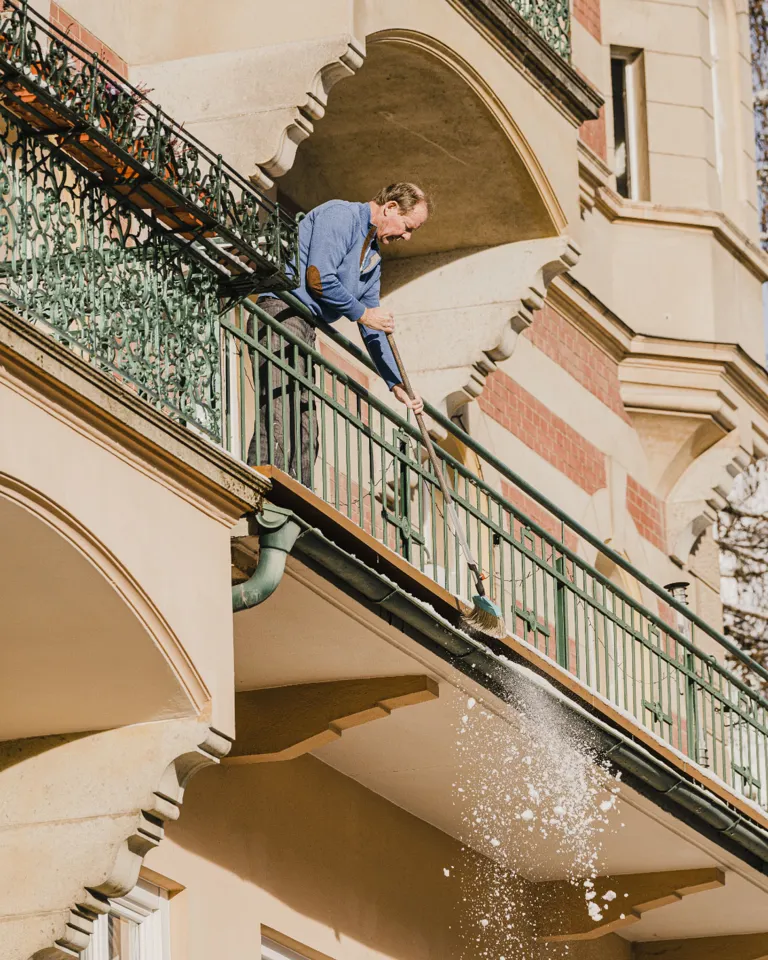

Grand Budapest Hotel-style architecture reflects the Old World charm of Bad Gastein, drawing the likes of filmmaker Wes Anderson

The glory days of the Viennese café culture can still be felt in the sleepy village of Bad Gastein

Barbara Elwardt